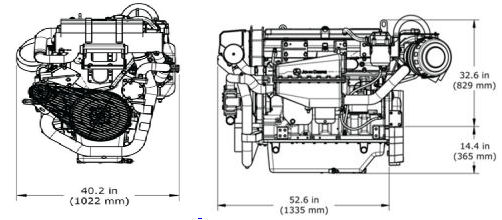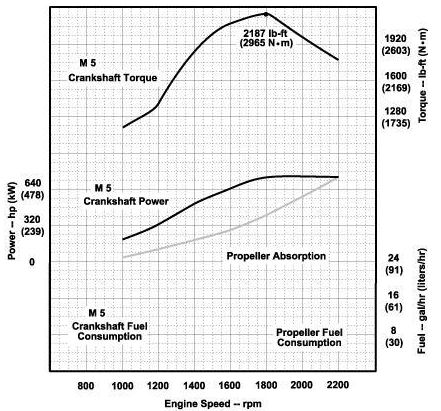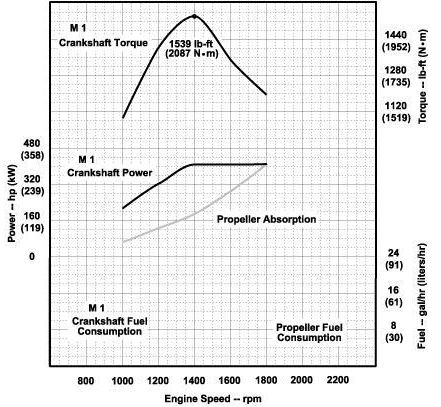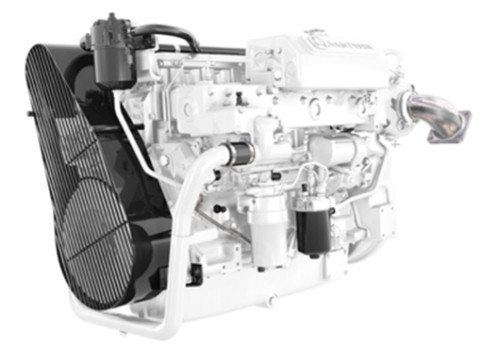Brief Summary
You don’t have to go to Europe or Japan for a powerful, long-lived diesel; you only have to go to Waterloo, Iowa, where they build John Deere diesel engines. And don’t take our word for it – ask a farmer, or a Bering Sea fisherman, or anybody who counts on his diesel to run hours, days, and weeks at a time, day-in and day-out, year after year. Most of these applications are single-engine, which speaks volumes about the brand’s dependability. Increasingly, the engine brand being installed by more and more builders of expedition trawlers and LRCs is John Deere, in both single and twin configurations.
Key Features
Specifications
| Type of Engine | |
|---|---|
| Number of Cylinders | 6 |
| Horse Power | 750 |
| Configuration | |
| Weight | 3362.00lbs |
| Fuel Type | Diesel |
| Fuel Delivery | |
| Shaft Length Options | |
| Shift Throttle Control | |
| Displacement | 824.00cu in |
| Steering Control | |
| Recommended Fuel | |
| Alternator Output | |
| CARB Rating | |
| Engine Monitoring System |
Captain's Report
 Will it fit? Repowering with a 750-hp diesel isn’t a do-it-yourself job, so rely on your mechanic or boatyard engineer to determine if the Deere 6135 is the right match for your application and will fit in your engine room. But use these dimensions for a preliminary measurement. Spec weight of the 6135 is 3,362 lbs., dry, without the marine gear.
Will it fit? Repowering with a 750-hp diesel isn’t a do-it-yourself job, so rely on your mechanic or boatyard engineer to determine if the Deere 6135 is the right match for your application and will fit in your engine room. But use these dimensions for a preliminary measurement. Spec weight of the 6135 is 3,362 lbs., dry, without the marine gear. Match Output to Application
The 6135 series come in five power ratings, from 425 to 750 hp. The lowest rating, M1, is for continuous-duty, in a fishing boat, tug, long-range motoryacht – any vessel that keeps the engine cranking 24/7 for days at a time. (John Deere specs say more than 3000 hrs./year at more than 65% load, 24-hr. uninterrupted operation at full power.) For less-arduous service, 500-, 575- and 650-hp ratings are also offered.
It is for this very reason – the “continuous-duty” rating – that more and more builders of serious, ocean-going trawlers and expedition boats are installing John Deere engines. By “de-tuning” the Deere 6135, the engine-maker can offer extremely long life and reliability.
Most makers of diesel engines in this class actually predict engine life on the number of gallons (liters) of fuel consumed, rather than the number of hours the engine has been run. So, in this example, the M1 version of the 6135 rated at 425-hp will be able to run many more hours than the M5 version which can develop 750-hp.
Where to use the M5 Model
The draw-back, of course, to specifying a de-tuned engine is its power-to-weight ratio. In trawler yachts, particularly those with single engines, that ratio is not nearly as important as reliability. Sportfishermen, on the other hand, typically want speed and light weight in order to get out to distant fishing grounds and back in a long day. Either that or they want to drag-race their fishing buddies from the sea buoy to the fishing grounds. Either way, the hp-to-weight ration is important. Depending on the weight and beam of the boat, the M5 version would probably be a good option in sportfishermen and convertibles from about 38’ to 54’ or so, depending on how fast you want to go.
This version we’re talking about here, the 750-hp model M5, is rated for light duty, 300 hrs/yr at typically 35% load, only ½ hr out of every 8 at full power – in other words, the way most sportfishing and convertible yacht engines are used. The M5 revs at 2200 rpm max and develops max torque at 1800 rpm.
 Here are the performance curves for the M5 variant of the 6135SFM75, probably the one you want. It develops max torque at 1800 rpm, an ideal throttle setting for cruising: 80% max. You can’t see it from this graph, but fuel burn at maximum load is predicted by Deere to be 37.7 gph (142.9 Lph). We haven’t tested the engine ourselves and that number will change depend on the application and conditions to some degree.
Here are the performance curves for the M5 variant of the 6135SFM75, probably the one you want. It develops max torque at 1800 rpm, an ideal throttle setting for cruising: 80% max. You can’t see it from this graph, but fuel burn at maximum load is predicted by Deere to be 37.7 gph (142.9 Lph). We haven’t tested the engine ourselves and that number will change depend on the application and conditions to some degree.  This is the torque curve for the M1, 420-hp, version of the 6135 diesel. Note that peak torque is at 1400 rpms and it is there where you will probably want to run your trawler or motoryacht for best fuel economy. Fuel burn in this engine at max load is predicted by Deere to be 20.9 gph (79.2 Lph)
This is the torque curve for the M1, 420-hp, version of the 6135 diesel. Note that peak torque is at 1400 rpms and it is there where you will probably want to run your trawler or motoryacht for best fuel economy. Fuel burn in this engine at max load is predicted by Deere to be 20.9 gph (79.2 Lph) Many Features
All the variants of the 6135 series share the same features, including:
*Electronically controlled unit injectors to provide precise fuel delivery with variable timing, resulting in excellent fuel economy and performance.
*Replaceable wet-type cylinder liners, hardened and precision machined for long life.
*Watercooled turbocharger and exhaust manifold, with reduced external connections to eliminate hoses and fittings that can leak or break.
*High-capacity heat exchanger designed for reliable operation in adverse conditions.
*Directed top-liner cooling to reduce upper liner temperature by as much as 130 degrees F.
*High torque and low rated RPM for excellent vessel control and maneuvering; lower rated rpm also limits vibration and noise for better crew comfort.
*Fuel system self-diagnostics.
 The 6135 Series engines are excellent choices for convertibles, cruisers, trawler yachts and other recreational applications. With high torque at low rated speeds, boaters can enjoy excellent vessel control and maneuvering on all these John Deere engines, says the company. All versions of the engine idle at 600 rpm.
The 6135 Series engines are excellent choices for convertibles, cruisers, trawler yachts and other recreational applications. With high torque at low rated speeds, boaters can enjoy excellent vessel control and maneuvering on all these John Deere engines, says the company. All versions of the engine idle at 600 rpm.